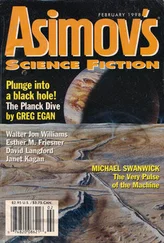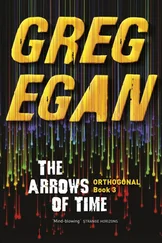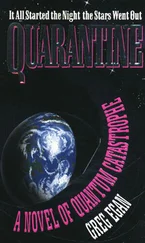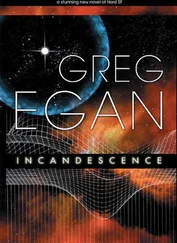Greg Egan - The Clockwork Rocket
Здесь есть возможность читать онлайн «Greg Egan - The Clockwork Rocket» весь текст электронной книги совершенно бесплатно (целиком полную версию без сокращений). В некоторых случаях можно слушать аудио, скачать через торрент в формате fb2 и присутствует краткое содержание. Жанр: Фантастика и фэнтези, на английском языке. Описание произведения, (предисловие) а так же отзывы посетителей доступны на портале библиотеки ЛибКат.
- Название:The Clockwork Rocket
- Автор:
- Жанр:
- Год:неизвестен
- ISBN:нет данных
- Рейтинг книги:3 / 5. Голосов: 1
-
Избранное:Добавить в избранное
- Отзывы:
-
Ваша оценка:
- 60
- 1
- 2
- 3
- 4
- 5
The Clockwork Rocket: краткое содержание, описание и аннотация
Предлагаем к чтению аннотацию, описание, краткое содержание или предисловие (зависит от того, что написал сам автор книги «The Clockwork Rocket»). Если вы не нашли необходимую информацию о книге — напишите в комментариях, мы постараемся отыскать её.
The Clockwork Rocket — читать онлайн бесплатно полную книгу (весь текст) целиком
Ниже представлен текст книги, разбитый по страницам. Система сохранения места последней прочитанной страницы, позволяет с удобством читать онлайн бесплатно книгу «The Clockwork Rocket», без необходимости каждый раз заново искать на чём Вы остановились. Поставьте закладку, и сможете в любой момент перейти на страницу, на которой закончили чтение.
Интервал:
Закладка:
To accommodate light’s simplicity, half of science would need to be rewritten.
Yalda looked up; Sitha was starting to show against the fading gray sky. The colors were still weak, but the trail’s violet tip was as prominent as a skewer-worm’s barb.
“What have you done to me?” she said.
Then she remembered that there was no air between them, and she wrote the words across her chest instead.
6
“If time is exactly the same as space,” Giorgio asked Yalda, “why is it that I can walk to the Great Bridge, but I can’t walk to tomorrow?”
Yalda was distracted by a hubbub of exuberant buzzing and chirping from the adjoining room. In her absence, Giorgio’s co had given birth, and though the children were being cared for by their grandfather during the day, Giorgio couldn’t bear to be separated from them. He’d set up a nursery in the room beside his office.
Yalda focused on his question. “You’re already traveling toward tomorrow, along the most direct route possible. The shortest distance there is a straight line, and by standing still you’re following that line; you can’t do any better than that.”
“That makes sense,” Giorgio conceded. “But if I can’t do better, why can’t I do worse? Why can’t I dawdle and delay, and reach tomorrow later than expected? I can certainly do that if I walk to the Great Bridge.”
“And you can do it on your way to tomorrow,” Yalda replied. “If you cease standing still, if you wander around Zeugma, you will add some time to your journey. But because you can’t move very quickly, you can’t really manage much of a detour. The distance to tomorrow is vastly greater than the distance across Zeugma; the proportion by which you can increase it with any plausible peregrinations is unmeasurably small.”
Giorgio was amused, and she saw him slip out of his role for a moment to marvel openly at the sheer strangeness of these notions. Yalda knew she hadn’t convinced him that her ideas were correct, but he believed nonetheless that it was worth presenting them to the whole school of natural sciences: physicists, mathematicians, chemists and biologists. Before she spoke before so many colleagues, though, Giorgio wanted to be sure that she could defend her ideas against the inevitable barrage of objections, and he was doing his best to prepare her by anticipating every possible question and complaint.
“Exactly how far away is tomorrow?” he asked.
“As far as blue light can travel in a day.”
“ Blue light? What’s so special about blue?”
“Absolutely nothing,” Yalda said firmly. “Violet is faster, and I believe there are even faster hues that we can’t perceive. But just as there’s a line in space that lies halfway between right and forward —marking equal progress in those two directions—there’s a line halfway between right and into the future . We perceive the light that reaches us at such an angle to be blue, and if we follow that light for a day, its progress marks out the equivalent distance.”
“I can’t compete with blue light,” Giorgio said, “so I can’t noticeably delay tomorrow. But why can’t I walk to yesterday?”
“For much the same reason,” Yalda replied. “Bending your path around until it’s turned backward would require an immense, sustained acceleration. In principle it ought to be possible, but it’s not something you should expect to be easy. You’re heading toward the future with a lot of inertia; you can nudge your trajectory a little with muscle power or a truck’s engine—but as you said, blue light isn’t easily outpaced.”
“But even if we only imagine it ,” Giorgio persisted, “traveling toward the past would be very different from traveling toward the future. Traveling toward the future, we can shatter a stone into pieces with one blow; if we were traveling toward the past, the pieces would rise up and remake the whole before our eyes. Why is that distinction so clear… when directions in space such as north and south can barely be distinguished?”
“The same reason as we always suspected,” Yalda countered. “In the distant past, our part of the cosmos had much lower entropy; whether or not there was a single, primal world, things were certainly more orderly. The direction of increasing entropy looks radically different from the direction in which entropy decreases—but that’s not a fundamental property of space or time, it’s a happenstance of history.”
Giorgio wasn’t satisfied. “Time in either direction looks utterly different from any direction in space.”
“That’s because we’re surrounded by things that are moving almost entirely along that one axis,” Yalda said. “Not because physics decrees that they must move that way, but because they share a common history that has set them on that course. All the histories of all the worlds we can see form an almost straight bundle of lines through the four dimensions. The fastest star we know of is moving at barely one part in a gross of the speed of blue light. Living in a bundle of lines that are all so close to being parallel to each other, we shouldn’t be surprised that their common direction appears special to us.”
Giorgio changed his attack. “You say physics itself doesn’t decree that our histories are almost parallel. So according to your theory, an object could have a trajectory entirely orthogonal to our own?”
“Yes.”
“It could move with an infinite velocity ?”
Yalda didn’t flinch. “Yes, that’s how we’d describe it.” It could cross what she and Giorgio thought of as a region of space in no time at all. “But that’s no stranger than saying that a vertical pole has an ‘infinite slope’: unlike a mountain road, it gets where it’s going vertically without bothering to go anywhere horizontally. An object that gets where it’s going without bothering to move across what we call time isn’t doing anything pathological; in reality, there’s nothing ‘infinite’ about it.”
“What about its kinetic energy?” Giorgio demanded. “Half its mass times its velocity squared?”
“That formula’s merely an approximation,” Yalda said. “You can’t use it for anything but small velocities.”
She summoned a diagram onto her skin. “If you want to know an object’s energy and momentum, draw an arrow whose length is the object’s mass, and point it along the line of its history. If you think the object is motionless, the arrow will point straight along the time axis; if you think it’s moving, the arrow needs to be tilted accordingly.”
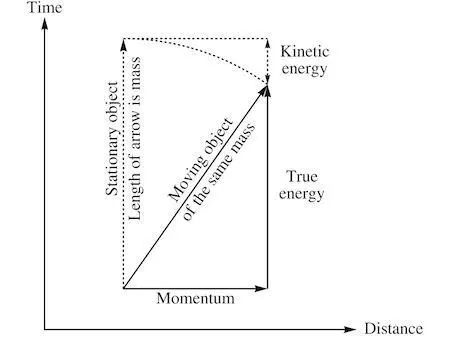
“The amount by which the height of the arrow is diminished—compared to the motionless version—is its kinetic energy. For small velocities that will match the old formula, but for higher velocities it will grow much more slowly. The object’s momentum is the distance across space that the arrow spans; again, that agrees with the old formula if the object is moving slowly.”
Giorgio pretended that he hadn’t seen the picture before. “What’s this ‘true energy’?”
“The natural measure of energy is the height of the arrow in the time direction,” Yalda explained. “That way, energy is related to time in the same way momentum is related to space. Kinetic energy is a derived, secondary quantity.”
“But ‘true energy’ becomes less when you tip the arrow over,” Giorgio noted. “So when something moves… you’re now declaring that its energy is decreased ?”
Читать дальшеИнтервал:
Закладка:
Похожие книги на «The Clockwork Rocket»
Представляем Вашему вниманию похожие книги на «The Clockwork Rocket» списком для выбора. Мы отобрали схожую по названию и смыслу литературу в надежде предоставить читателям больше вариантов отыскать новые, интересные, ещё непрочитанные произведения.
Обсуждение, отзывы о книге «The Clockwork Rocket» и просто собственные мнения читателей. Оставьте ваши комментарии, напишите, что Вы думаете о произведении, его смысле или главных героях. Укажите что конкретно понравилось, а что нет, и почему Вы так считаете.


